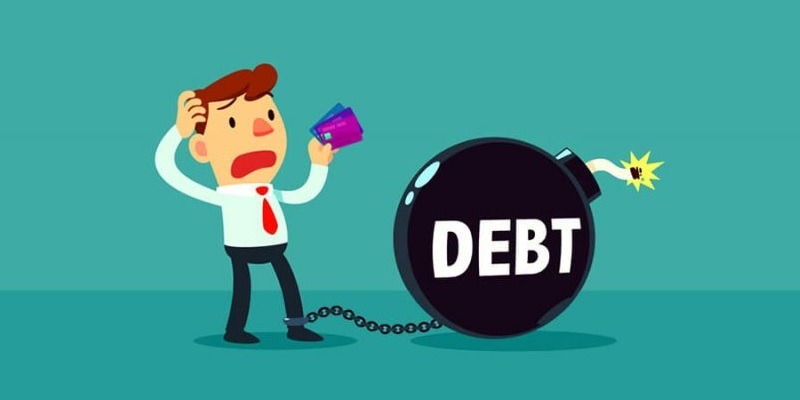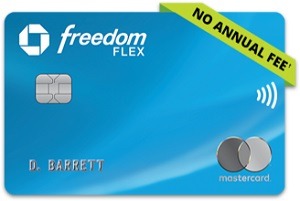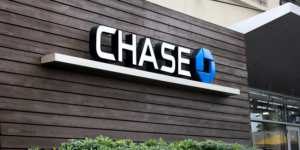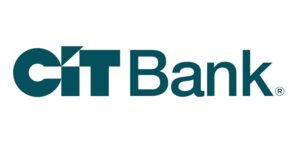 It’s easy to get lost in swiping your credit cards without thinking about how much you will have to pay later. However, soon you will be faced with credit card debt and it can be hard to get out of, but all you need is a plan and dedication.
It’s easy to get lost in swiping your credit cards without thinking about how much you will have to pay later. However, soon you will be faced with credit card debt and it can be hard to get out of, but all you need is a plan and dedication.
Read on to learn how you can pay off your credit card debt in a couple of steps.
Best Way to Pay Off Credit Card Debt Fast
This step-by-step guide will help you get rid of your credit card debt for good. All you have to do is follow these eight steps.
Decide Which Credit Card To Pay Off First
To decide which credit card to pay off first, you can look at two things: the interest rate and the total balance.
- If you are ranking your credit cards based on the interest rate, it would be best to start with the card that has the highest rate (the debt avalanche).
Starting with the highest rate will ensure that you do not rack anymore unnecessary fees in the long run. This is the recommended route due to it being the most efficient.
- If you are ranking your credit cards based on the balance, determine whether you want to start with the lowest or highest balance first.
Getting the cards with the lowest balances out of the way first (called the debt snowball method) is a good idea if you need motivation to get started with someplace small.
The key to using this method is rolling over your payments every time you pay off a card. This will add a payment to the next card you are deciding to pay off, knocking out the remaining debts faster.
For example, say you devote $300 every month to pay off your credit card debt and use $200 a month for one card and the rest for the minimums of the others. Then, once you pay off one card and the minimums, the money would go to the next card, instead of funds free to use.
Transfer Your Credit Card Debt
Balance transfers are the fastest way to get out of credit card debt.
When you do a balance transfer, you move your debt from one card to another. It is possible to even consolidate your debt from multiple cards to one. If you have a big balance, this is the best way to get out of credit card debt.
A good tip is to look for a card with an introductory 0% APR for balance transfers. This will allow you to focus on paying your debt instead of having interest fees hanging over you. These types of promotions may be good, but there are sometimes a balance transfer fee.
 The Chase Freedom FlexSM offers a $200 bonus after spending $500 on purchases in your first 3 months from account opening. 0% Intro APR for 15 months from account opening on purchases and balance transfers, then a variable APR. You'll earn: • Earn 5% cash back on up to $1,500 in combined purchases in bonus categories each quarter you activate. Enjoy new 5% categories each quarter! • 5% cash back on travel purchased through Chase Travel?, our premier rewards program that lets you redeem rewards for cash back, travel, gift cards and more • 3% cash back on drugstore purchases and dining at restaurants, including takeout and eligible delivery service • Unlimited 1% cash back on all other purchases You cash back rewards do not expire as long as your account is open and there is no minimum to redeem for cash back. This card has no annual fee. |
However, you may need a good credit score in order to be approved for a balance transfer, otherwise it may not be an option for you.
Before you go to transfer your balance, you may want to create a realistic plan to pay off your balance before the promotional period ends.
Tip: You can get a free credit report from Equifax, Experian, and TransUnion once every 12 months by using AnnualCreditReport.com, the only authorized online source for access to free credit reports.
Pay More Than The Minimum
Paying the minimum on your credit card statement may seem like a good idea at the time, but it soon adds up to a lot of money in interest you will have to owe.
In your credit card statements, there are charts that outline how long it will take to pay off your balance when paying only the minimum. In which case, would be a very long time.
**Be sure not to miss a credit card payment, or else it can damage your credit score and make your interest rate rise. Contact your credit card issuer right away if you are late to making a payment and explain why.
Don’t only pay the minimum payment. Even just a little bit more each month can help reduce interest rates and payoff time greatly.
Reduce Your Existing Credit Card Interest Rate
There are also other ways you can help slow down your ever increasing debt, especially with those high interest rates.
You can ask your credit card issuers to lower your interest rate, only if:
- Your account has been open for a while
- You’ve always paid on time
- You don’t have a huge balance
This will qualify you for a temporary rate reduction.
You must be sure to be on time for your payments and not miss any if your rate is lowered, otherwise you may be subject to the default rate once again. This rate can be as high as 29%.
If you need a couple years to pay off your debt, you could also use a personal loan. Be cautious and read the terms and conditions carefully to ensure you understand it all.
This will only work if you know exactly how you will pay back that loan, or else you will have the same debt, but in another form.
Avoid Using High Interest Credit Cards
When you’re trying to pay off credit card debt, make a complete list of all your cards. You can stay on top of them by:
- Organizing your cards based on their interest rate.
- Hiding the card with the highest interest rate somewhere where you won’t be able to use it.
- Prioritize which card you will pay off first so that the interest won’t accumulate.
**Try not to cancel any credit cards, because it can also hurt your credit score instead of helping.
Reduce Unnecessary Expenses
There are many items that we purchase that can add up quickly. If you are buying a cup of $4 coffee everyday, that’s about $124 a month! If you cut back on these purchases, you can save a lot of money, helping to pay off your debt.
Try tracking your spending over the course of two weeks, no matter how small, to see where you can cut back. Consider the following:
- What can you live without?
- Can you decrease the amount of times you order takeout?
- Can you limit the amount of times you walk into a store to prevent impulse purchases?
With this, you can see where all your money goes each month. You will soon realize how those small purchases can offset hundreds of dollars. If you see how much you spend in a month, you may be more motivated to cut back on some purchases.
Create a Practical Budget
Now that you know how you spend your money, it is a good idea to come up with a budget. Most of your debt is likely a direct result of a poor budget. Fortunately, this is easy to correct. You just have to be focused and determined.
A budget is a plan on how you will spend and allocate your money each month. To get started, just add up all your expenses and subtract it from your income. Be sure you are accurately calculating your expenses. It may also be helpful to download a budgeting app on your mobile device.
Find New Ways To Pay Off Debt
If you’ve already cut back on a lot of expenses, another option is to find new ways to make more money. You could:
- Sell some of your personal belongings that you could part with.
- Consider a side job, such as mowing lawns, baby/pet-sitting, or driving for Uber.
- Use any extra money you receive from things like tax returns, or a raise towards paying off your debt.
Instead of spending your extra money, use it to help pay off your debt.
Use a Debt Settlement Company
Debt settlement companies negotiate with your creditors to allow you to pay some money to settle your debt. You will be asked to set a specific amount from your savings account each month to put into an escrow like account that will go towards to paying off some money. Even though this might be a good option for repaying your debit, please note that you have to understand the risks involved in this process.
- Check your budget and make sure that the terms set by the debt settlement company are possible to do. If not, you might end up having to drop out of the debt settlement program.
- The debt settlement company might not be able to settle all your debts
- If you put monthly payments into your debt settlement account rather than putting that money directly toward paying back your credit card company means that you could still be racking up penalties and late fees
 |
 |
Bottom Line
Even if you are tight on money, it is still possible to pay off your credit card debt. You just have to make a plan, re-evaluate your spending habits, and start little by little paying off your debt. In the end, it will be worth it. Wishing you the best of luck!
If you would like to find more posts like these, check out our bank guides.




Leave a Reply